Transforming a bedroom with the stroke of a paintbrush is one of the most thrilling adventures in interior design. Whether you’re just starting out or a seasoned decorator, the joy of watching a room come to life with color is an experience like no other. “6 Easy Bedroom Wall Painting Tips” is your ticket to achieving that perfect balance of creativity and practicality, ensuring your bedroom becomes a true reflection of your personal style.
For beginners, this guide will demystify the process, breaking down each step so you can paint with confidence and flair. Experienced home decorators will discover fresh insights and innovative techniques to elevate their skills and breathe new life into their spaces. Each tip is designed to be both practical and inspiring, allowing you to embrace the transformative power of color with ease.
Imagine the satisfaction of stepping into a room that feels like a personal sanctuary, perfectly tailored to your tastes and needs. With these easy-to-follow tips, you’ll not only enhance the aesthetic appeal of your bedroom but also create a haven that promotes rest and relaxation. Dive in with confidence, and watch as your walls become the canvas for a beautiful transformation.
Choose Calming Color Palettes
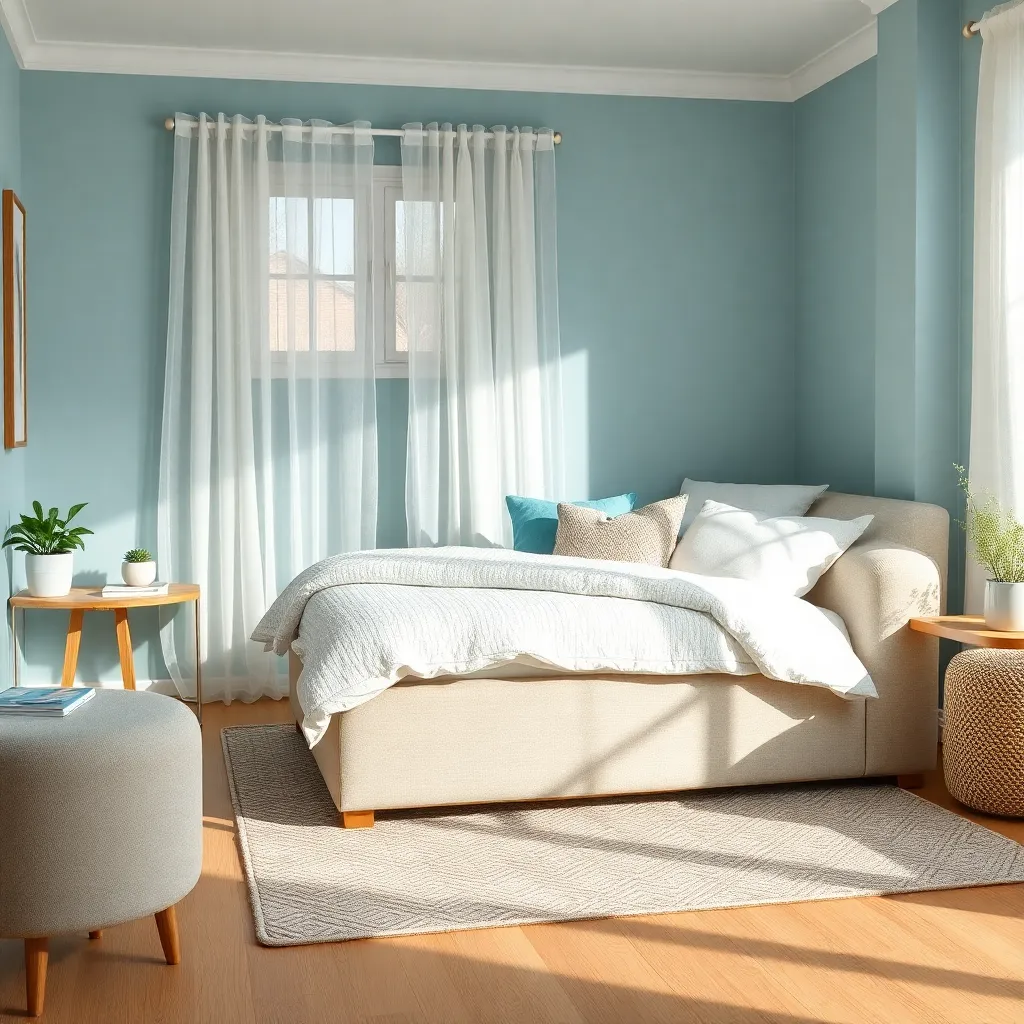
Choosing a calming color palette is essential for creating a serene bedroom atmosphere. Opt for soft, muted tones like gentle blues, soft greens, or warm neutrals, which are known to promote relaxation.
To enhance the calming effect, consider layering different shades of the same color. For instance, mix lighter and darker shades of blue on different walls or through textiles like curtains and bed linens.
Furniture selection plays a crucial role in complementing your calming color palette. Choose pieces with natural materials like wood or rattan to add a sense of warmth and texture to the room.
Advanced decorators might experiment with more complex combinations, such as pairing a soft lavender with a muted gray. This blend can add a touch of sophistication while maintaining a tranquil vibe.
Use Painter’s Tape for Precision
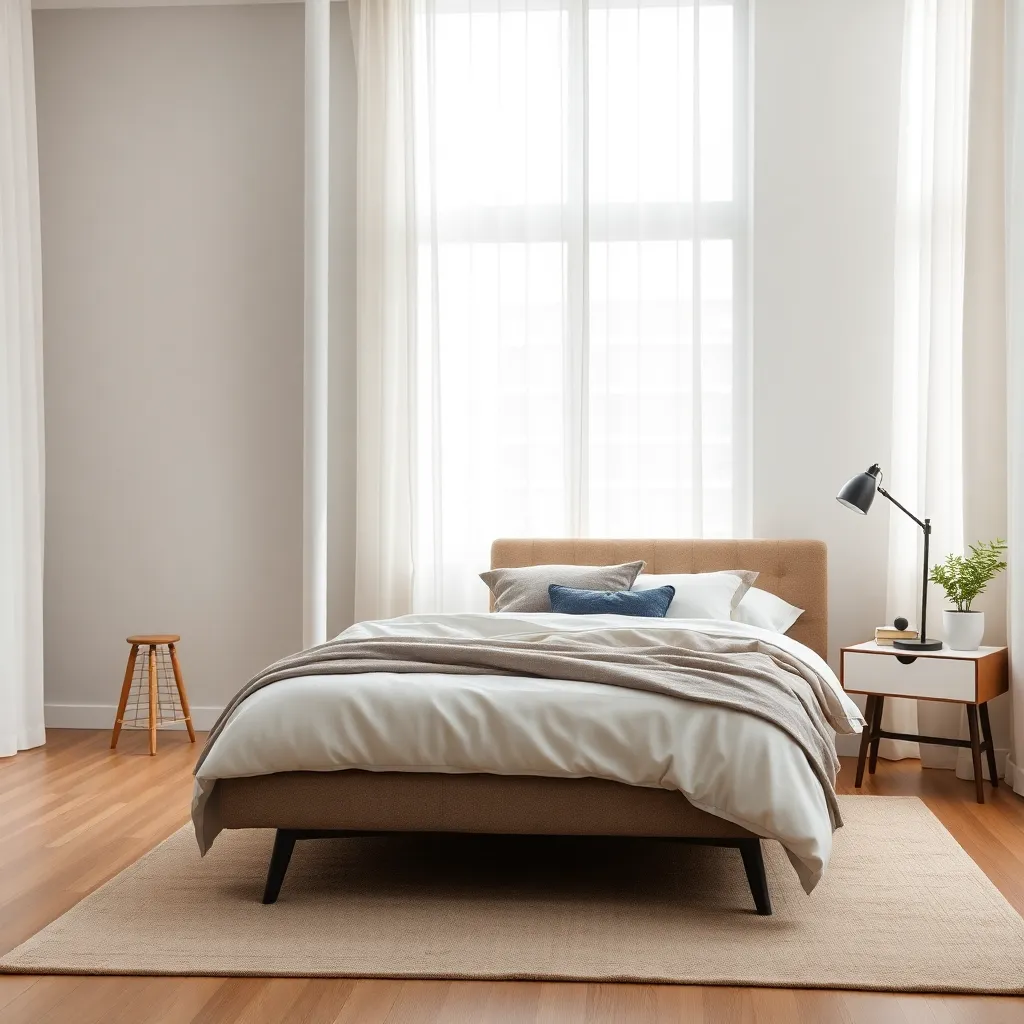
Painter’s tape is an essential tool for achieving clean, crisp lines on your bedroom walls. It allows you to create precise edges when painting around trim, windows, or even for creating intricate designs. For beginners, start by using painter’s tape to clearly define the boundaries of your wall and ceiling to prevent paint bleed. Choose a high-quality tape that adheres well but removes cleanly to avoid damaging your surfaces.
Applying painter’s tape effectively can be the difference between a professional-looking finish and a messy job. Ensure the surface is clean and dry before applying the tape to help it stick better. Press the tape down firmly along the edges with your fingers or a plastic scraper to prevent the paint from seeping underneath. For more advanced decorators, consider using tape to create geometric patterns or stripes, adding a dynamic element to your bedroom walls.
When selecting tape, consider the type of paint you are using—there are tapes designed for different surfaces and paint types. For instance, delicate surface tapes are ideal if you’re working on recently painted walls or wallpaper. Remember to remove the tape while the paint is still slightly wet to avoid peeling off any dried paint along with it. This small detail can make a significant difference in the final appearance of your room.
Experiment with different tape widths to achieve various design effects. Using wider tape can help create bold, standout color blocks, while thinner tape can be used for intricate details or subtle accents. Pair this technique with a calming color palette to enhance the overall ambiance of your bedroom. By carefully planning and executing your design with painter’s tape, you can transform your walls from plain to personalized and stylish.
Incorporate Accent Wall Techniques
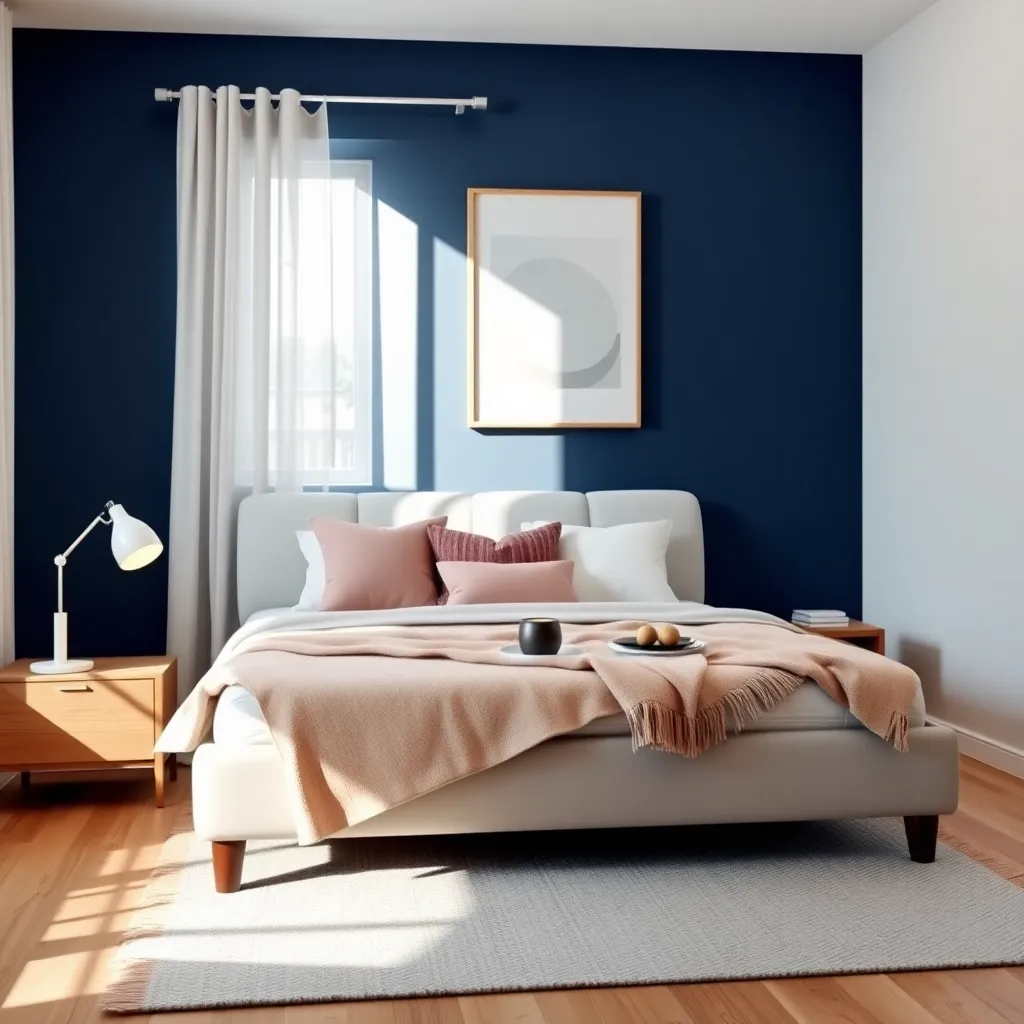
Creating an accent wall can transform the look and feel of your bedroom with minimal effort. Begin by choosing a wall that naturally draws attention, such as the one behind your bed or a wall with a unique architectural feature.
For a bold statement, consider using a vibrant paint color that contrasts with the other walls. Rich shades like deep navy or emerald green can add drama and depth, making the room feel more intimate and cozy.
Another technique is to use textured paint or wallpaper to add dimension to your accent wall. Materials like faux brick or wood panels can bring a rustic charm, while a metallic or geometric pattern offers a modern twist.
Finally, accessorize your accent wall to enhance its impact. Hang a series of framed art or mirrors to create a gallery effect, or install floating shelves to display your favorite decor pieces. Layering in varied textures and shapes will make the wall a dynamic focal point in the room.
Opt for Quality Paint Brushes
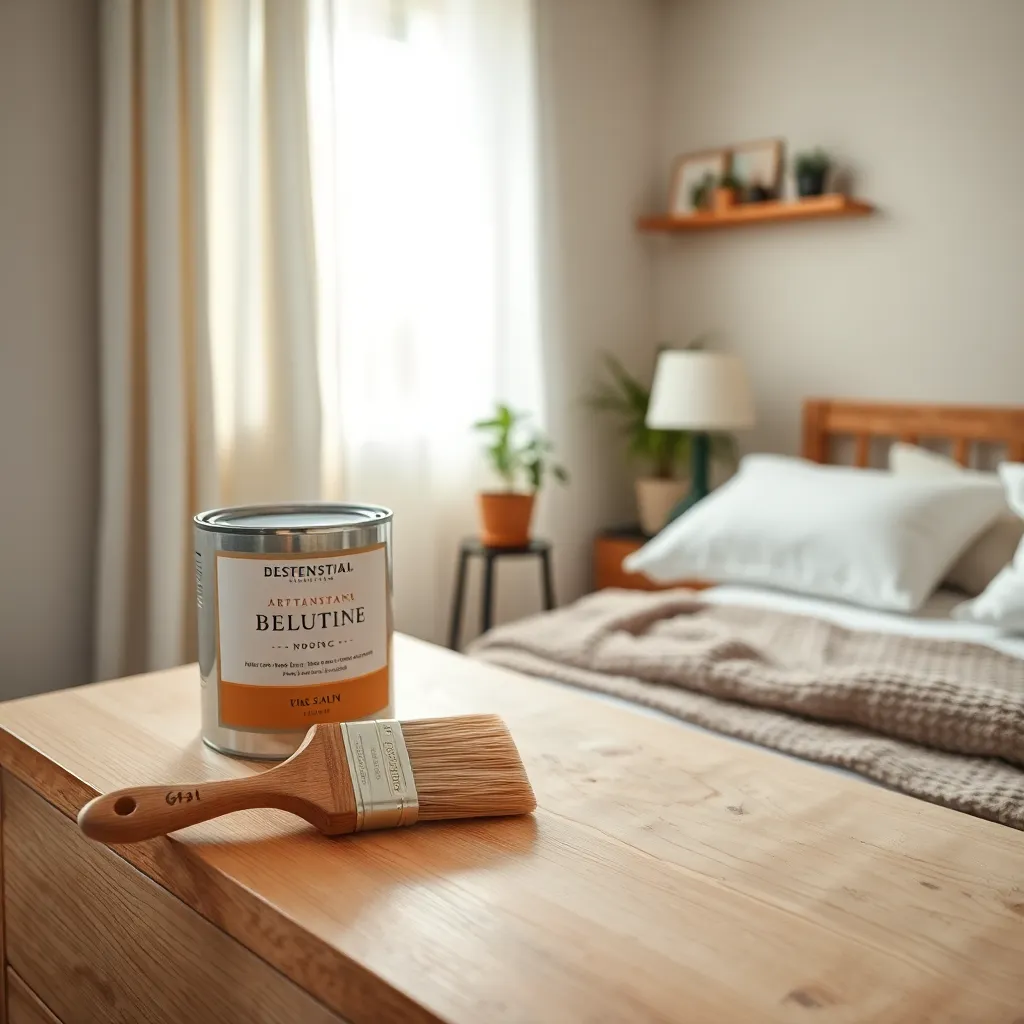
Choosing the right paint brushes can significantly impact the outcome of your bedroom wall painting project. High-quality brushes ensure a smoother application and a more professional finish, making your walls look effortlessly elegant.
Investing in premium brushes might seem costly, but it pays off in the long run. Natural bristle brushes are perfect for oil-based paints, while synthetic bristles are excellent for water-based paints, ensuring optimal coverage and minimal brush marks.
For beginners, start with a versatile set including a two-inch angled brush for cutting in and a three-inch flat brush for larger areas. These options provide control and precision, helping you navigate corners and edges with ease.
Experienced decorators might opt for specialty brushes like sash brushes for intricate areas or foam brushes for smooth finishes. Using the right tools will enhance your technique, making even complex patterns or color transitions appear seamless.
Test Colors with Sample Swatches
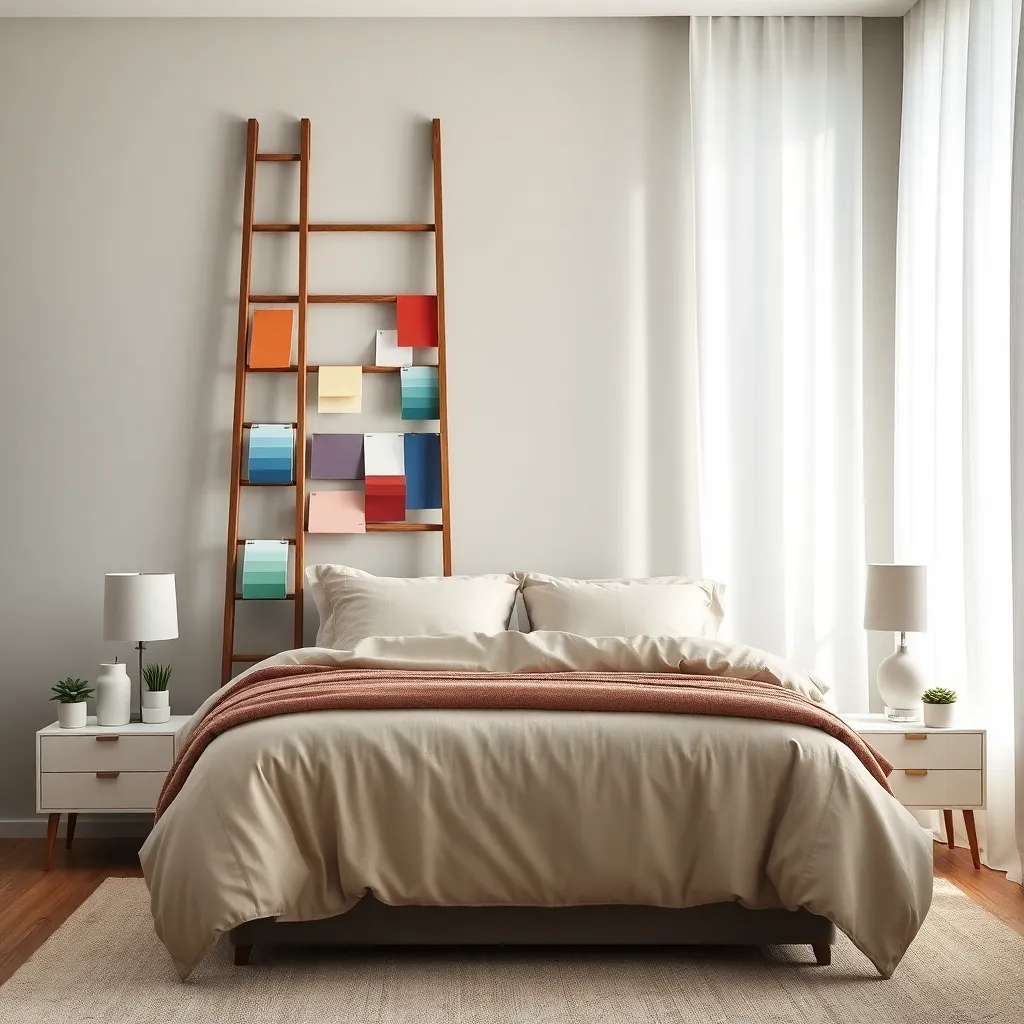
Before committing to a color, it’s crucial to test it with sample swatches on your bedroom walls. Choosing a few shades you love and painting small areas can help you see how they interact with the room’s natural light throughout the day.
Utilizing sample swatches allows you to experiment with different finishes, such as matte or satin, to determine what complements your room’s aesthetic best. This step is essential because the finish can significantly impact the room’s overall feel and vibe.
Consider testing shades on multiple walls to account for variations in lighting. This approach ensures that you choose a color that remains consistently appealing, regardless of the time of day or the weather outside.
For a more advanced tip, try pairing your test swatches with fabric or other decor elements in your bedroom. This will help you visualize how the paint color will harmonize with your existing furnishings, creating a cohesive look.
Apply Primer for Smooth Finish
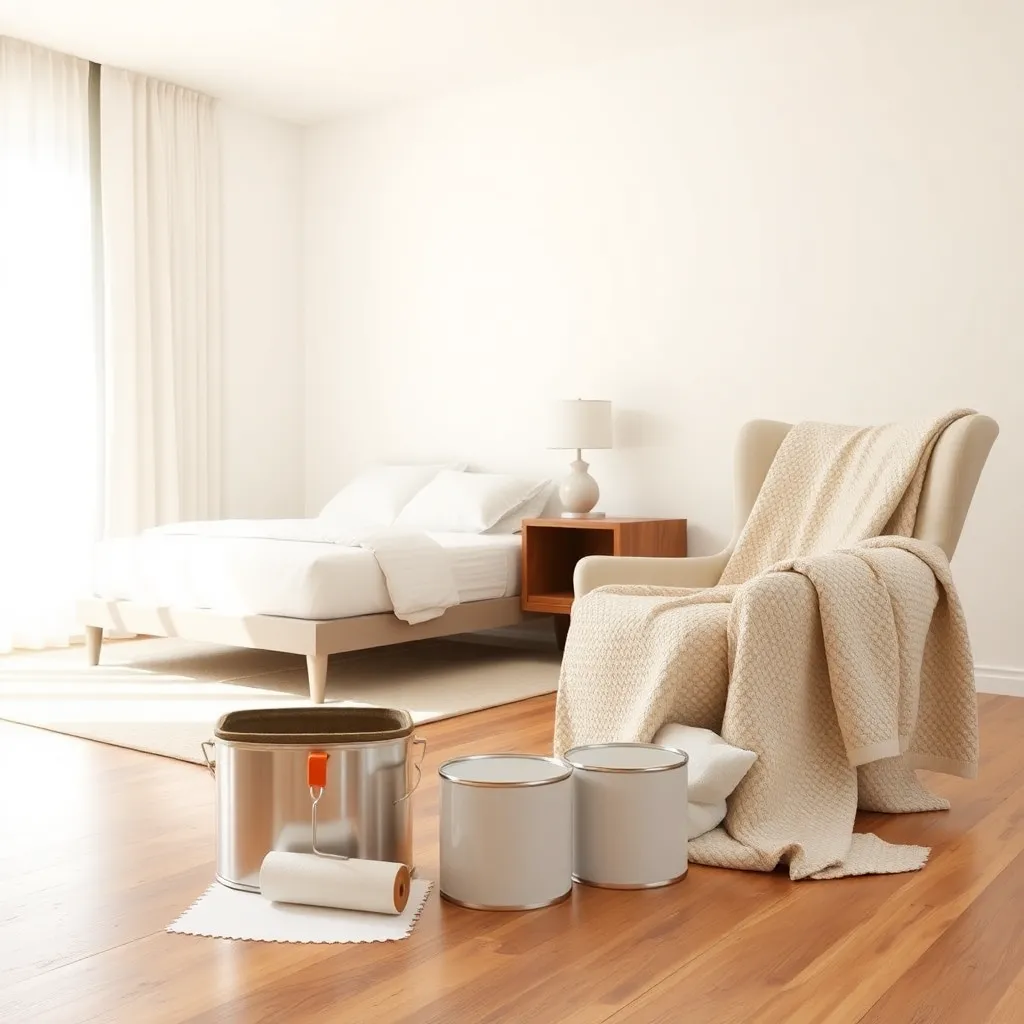
Applying primer is a crucial step in achieving a smooth and even finish on your bedroom walls. It helps to seal the surface, ensuring that the paint adheres properly and lasts longer.
For beginners, using a white primer can help in neutralizing the wall’s existing color, providing a blank canvas for your chosen paint hue. Professional decorators often recommend tinted primers that match your paint color, as they enhance the final shade and reduce the number of paint coats needed.
Before applying primer, ensure your walls are clean and dry to prevent any imperfections from showing through. Sand down any rough spots and fill in holes or cracks with spackle for the best results.
When selecting a primer, consider the type of paint you’ll be using; latex primers work well with water-based paints, while oil-based primers are ideal for oil paints. Invest in a high-quality brush or roller to apply the primer evenly, focusing on creating a thin, uniform layer.
For an advanced tip, consider priming your trims and ceilings first, as this prevents any accidental splashes on your freshly painted walls. This approach not only saves time but also ensures a seamless finish throughout your bedroom.
Conclusion: Growing Success with These Plants
As we explored the art of bedroom wall painting to enhance your relationship space, we touched on six key concepts: selecting soothing color palettes to foster tranquility, using accent walls to create focal points, incorporating personal touches for deeper connection, embracing texture to add warmth, balancing colors to maintain harmony, and ensuring lighting complements your new design. These tips are not just about aesthetics; they’re about creating an intimate environment that nurtures your relationship.
To put this into practice, choose one tip to implement this week. Perhaps start by discussing color preferences with your partner to ensure both of you feel at home in your shared space. This small step can open up avenues for deeper communication and collaboration.
Remember, transforming your bedroom with intention can be a powerful way to enhance your bond. Bookmark this article now so you can revisit these ideas and continue refining your relationship haven.
Looking ahead, let this be the foundation for a thriving partnership where both ambiance and affection grow. Your bedroom is more than just a place to sleep; it’s a vital element of your shared life. Here’s to creating a space that supports your love and happiness!
